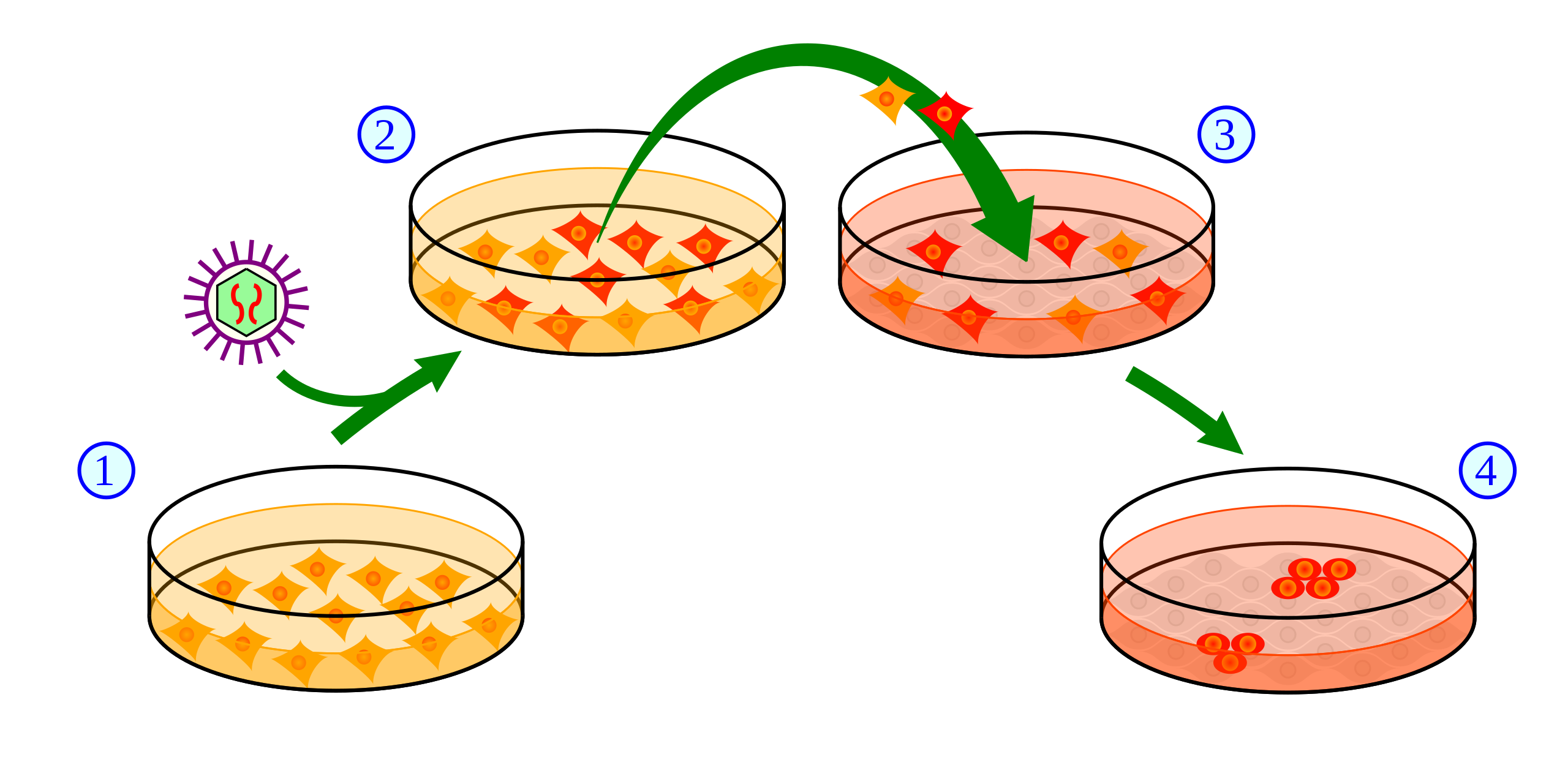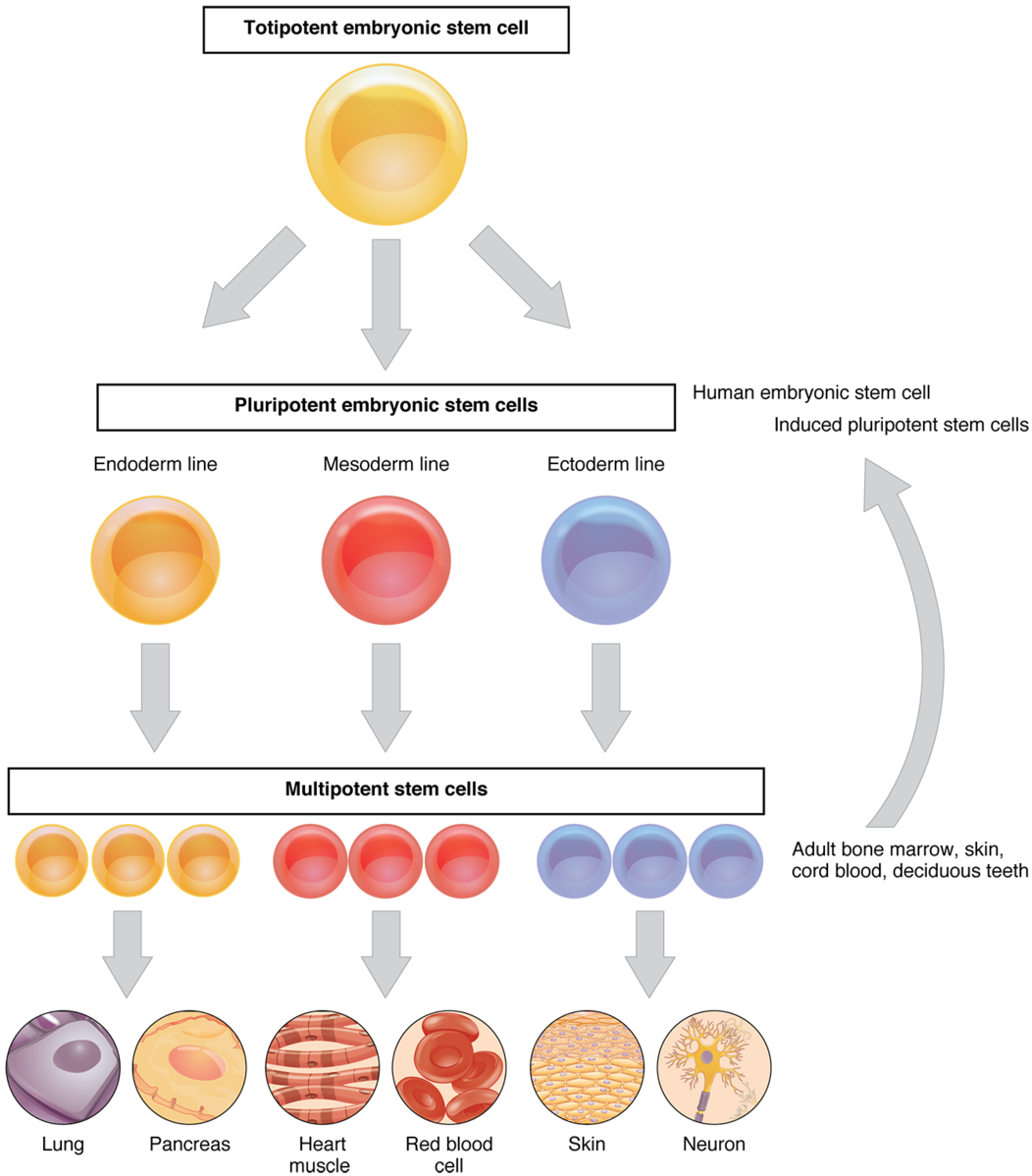Difference Between Pluripotent and Multipotent Stem Cell
Pluripotent stem cells are capable of forming any of the cells of the body. Multipotent stem cells can only form certain types of cells in the body.
What is Pluripotent Stem Cell?
Definition:
Pluripotent stem cells are those cells that are undifferentiated but which are capable of developing into any cell of the body. These types of stem cells naturally develop into and hence produce the multipotent cells of adults.
Examples:
Cells from embryos are pluripotent and are, in fact, able to differentiate into any of the cells of the tissues that are found in the body. These are the cells that do naturally develop into all the tissues, including the three germ layers, ectoderm, mesoderm and endoderm.
How they are obtained:
Natural pluripotent stem cells are called embryonic stem cells. These can be extracted from the cell mass of an embryo before it has attached to the uterus. Methods of cell reprogramming that have been developed by scientists can also allow researchers to artificially create pluripotent stem cells from adult stem cells.
Applications:
Scientists hope to be able to treat many human diseases using pluripotent stem cell, which is one reason they have been artificially inducing multipotent stem cells to become pluripotent. However, there has not yet been any approval of the use of pluripotent stem cells to treat any human illnesses. The general theory is that pluripotent cells can be used to replace diseased cells and thus can help people who are ill with certain conditions for which conventional treatments have failed.
What is Multipotent stem cell?
Definition:
Multipotent stem cells are undifferentiated cells which can form other types of cells, but they cannot form just any cell of the body. They are limited in how many different types of cells they are able to develop into. These cells can be artificially induced to become pluripotent, but do not do so naturally, rather they themselves differentiate from pluripotent cells during development of the organism.
Examples:
The stem cells found in the bone marrow of people are multipotent stem cells. These hematopoietic cells can give rise to any of the blood cells but are unable to develop into any non-blood cell. Recent research has also discovered multipotent cells in the heart, and such cells have been noted to be able to develop into heart muscle or endothelial cells.
How they are obtained:
Multipotent stem cells can be extracted from adults from various tissues of the body. Most commonly a needle is used to remove stem cells from the bone marrow of a donor when a bone marrow transplant is planned. These cells can be transferred into a compatible recipient. Stem cells can also be removed from cord blood after a person has given birth. Sometimes the cord blood it stored in case these cells are needed later.
Applications:
Transplants of bone marrow stem cells are commonly done to treat blood cancers such as leukemia. Bone marrow transplants can sometimes provide a cure for people with blood cancer since the person can then being to produce normal blood cells once their bone marrow has been replaced with healthy stem cells. Researchers also suggest that heart stem cells may be of use in the future to treat various cardiac conditions. The idea is that the cells can regenerate tissue that has been destroyed.
Difference between Pluripotent and Multipotent Stem Cell?
Definition
A pluripotent stem cell is an undifferentiated cell that can really develop into any cell of the body. A multipotent stem cell is an undifferentiated cell that can develop into one of a certain number of different types of cells.
Differentiation ability
Pluripotent stem cells can produce any cells of the body. Multipotent stem cells can only produce a limited number of cells.
Found in the embryo
The pluripotent stem cells are always found in the embryo. The multipotent stem cells are only sometimes found in the embryo at a later stage of tissue differentiation.
Found in the adult
Adult individuals never have pluripotent stem cells present. Adult individuals always have multipotent stem cells that are found in various tissues.
Can form any of the germ layer cells
Pluripotent stem cells can always form any of the cells of the ectoderm, mesoderm, and endoderm germ layers. Multipotent stem cells can’t form any of the cells of the three germ layers.
Can naturally form another stem cell type
Pluripotent cells by their very nature can produce other stem cells including multipotent cells. Multipotent cells cannot naturally produce other stem cells but can be artificially made to form pluripotent cells.
Examples
Examples of pluripotent stem cells can be found in the tissues of embryos. Examples of multipotent stem cells can be found in the bone marrow, umbilical cord, heart, and adipose tissue.
Table Comparing Pluripotent and Multipotent Stem Cell
Summary of Pluripotent Vs. Multipotent Stem Cell
- Both multipotent and pluripotent stem cells can give rise to other cells, but multipotent cells are limited in how many other cells they can develop into.
- Pluripotent cells are found naturally in the embryo stage of development for the embryo has attached to the uterine wall.
- Multipotent stem cells do occur at some stage during development and in adults.
- Some multipotent stem cells are already used to treat certain illnesses such as leukemia, and scientists are investigating the potentials of using pluripotent cells for treating various illnesses.
- Difference Between Rumination and Regurgitation - June 13, 2024
- Difference Between Pyelectasis and Hydronephrosis - June 4, 2024
- Difference Between Cellulitis and Erysipelas - June 1, 2024
Search DifferenceBetween.net :
Leave a Response
References :
[0]Beltrami, Antonio P., et al. "Adult cardiac stem cells are multipotent and support myocardial regeneration." Cell 114.6 (2003): 763-776.
[1]Kumar, Rajnish, et al. "Stem cells: An overview with respect to cardiovascular and renal disease." Journal of natural science, biology, and medicine1.1 (2010): 43.
[2]Romito, Antonio, and Gilda Cobellis. "Pluripotent stem cells: current understanding and future directions." Stem cells international 2016 (2016).
[3]Image credit: https://en.wikipedia.org/wiki/Induced_pluripotent_stem_cell#/media/File:Induction_of_iPS_cells.svg
[4]Image credit: https://commons.wikimedia.org/wiki/File:422_Feature_Stem_Cell_new.png



